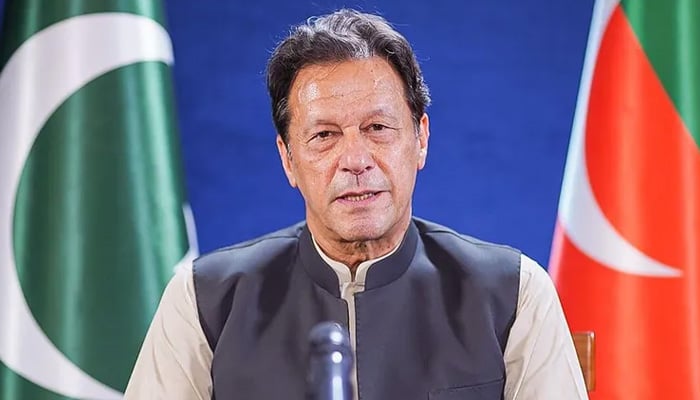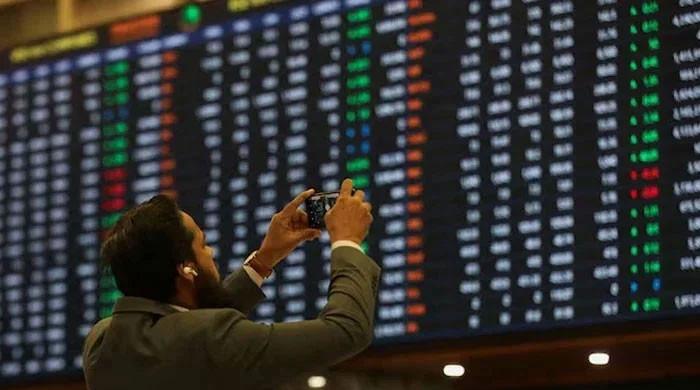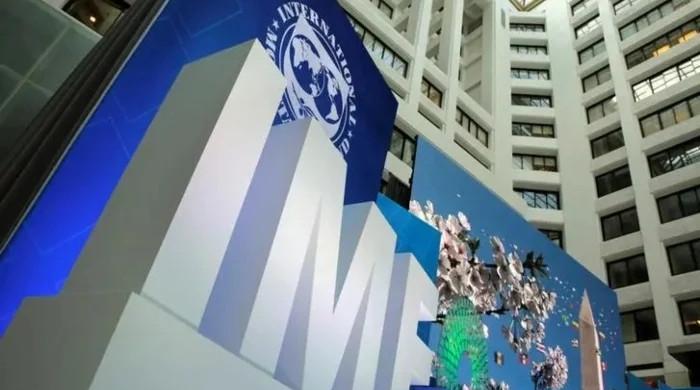Imran Khan: Victim or accused?
PTI chief exploited the situation well through massive media hype and as a result, PDM was left with little choice but only to ‘react’ to what he (Khan) said
March 08, 2023

The no-trust motion that was launched against the former prime minister Imran Khan about a year back on this very day i.e. March 8th, 2022 and executed a month later on April 9th, came as a ‘blessing in disguise’ for the Pakistan Tehreek-e-Insaf (PTI) chairman.
Why? Because Khan from being an accused and unpopular became a victim and the most popular leader with all predictions clearly showing he is far ahead of the ruling coalition of the Pakistan Democratic Movement (PDM) in the forthcoming general elections for the provincial Assemblies in Punjab and Khyber Pakhtunkhwa if held as per Supreme Court directives.
Imran’s popularity was at an all-time low at the time of his ouster a year back and his party had lost all the major by-elections, particularly in Punjab in 2021 with a year and a half left for Khan’s government. All predictions were in favour of PML-N then.
One of the key reasons behind the rapid rise in Khan’s popularity and the PDM government's unpopularity in the last year is said to be the same i.e., the economic crisis and the latter's failure to provide any relief to the people.
The ruling coalition led by Prime Minister Shehbaz Sharif failed miserably in overcoming the crisis and the situation worsened after Senator Ishaq Dar replaced Miftah Ismail as finance minister.
The cricketer-turned-politician Khan exploited the situation well through massive media hype by keeping his supporters on the streets and as a result, the PDM was left with little choice but only to ‘react’ to what he said.
He first came out with an anti-US narrative, blaming Washington for ‘regime change’ because of his visit to Russia and taking a neutral position on the Ukraine crisis. He then shifted the blame from the US to former army chief General (retd) Qamar Javed Bajwa and even demanded his ‘court martial’ in a recent flak.
The PDM had little to offer and had no idea what to do next after ousting the former prime minister. They even failed in developing an image of themselves that could be deemed positive. They turned out haplessly useless in providing the masses with any relief despite constituting a massive nearly 70-plus-strong cabinet. Before anything else, they amended National Accountability Bureau (NAB) law to get their cases withdrawn. They themselves stand divided. Some of them were in favour of fresh elections while others wanted to continue till August 2023. It is because with every passing day their chances of winning polls — if held on time — are growing slimmer and slimmer and they know it full well.
In the first 10 months, many PTI leaders like Shahbaz Gill, Azam Swati, Fawad Choudhry, Sheikh Rasheed Ahmad, etc were arrested and the manner in which they were allegedly treated reflected badly on PDM’s human rights image.
But, the two incidents which really damaged PDM and even the establishment’s image was the attempt on Imran Khan’s life during his rally in Wazirabad and the mysterious killing of renowned TV news anchor and journalist, Arshad Sharif.
Thus, Khan succeeded in building his image as a ‘victim’ and not ‘accused’ primarily because the government botched the case of his attempted murder to their peril. They first leaked the suspect’s video confession and then refused to register an FIR of the case on his complaint, overcomplicating things for themselves.
Although the prime responsibility lay with the then-Punjab government of former chief minister Chaudhry Parvez Elahi, Imran blamed the 'powers that be' as he also named a serving major general of the intelligence agency in Punjab as one of the three suspects.
Khan has somehow had everyone believe he could be attacked and his life was in danger in case he was arrested. He went as far as accusing Interior Minister Rana Sanaullah as well as former president Asif Ali Zardari (the latter has even claimed damages from him) of conspiracy to execute him. He successfully choreographed a situation with the help of his supporters that are guarding him all the time outside Zaman Park. Khan has also claimed that over 74 cases have been registered against him.
The government's move to ban Khan’s regular media talks and interviews on the mainstream TV channels through Pakistan Electronic Media Regulatory Authority (PEMRA) also went in the PTI leader's favour and further tarnished the government’s human rights and freedom of expression image.
The PTI kingpin’s aggressive tone from the right, the left, and the centre towards the establishment, the Election Commission of Pakistan, and at times even the judiciary beside the PDM government paid off and drove his opponents crazy.
In the last year, it was PML-N, which interestingly emerged as the ‘victim’ of its own creation and the vote-of-no-confidence move is now hurting them badly as they fear defeat if the Punjab Assembly elections are held on April 30th. In the process, the party itself looks in complete disarray and its Senior Vice-President Maryam Nawaz is at a total loss when it comes to countering Khan’s relentless tirades.
Three cases — including years old PTI foreign funding and the Toshakhana— against the former prime minister are the most crucial, but he has successfully raised a facade that this government and some other quarters are after his life and thus his arrest may be a conspiracy to assassinate him.
The PDM government in general and the PML-N, in particular, want Punjab and Khyber Pakhtunkhwa polls postponed. It is because they know if the PTI swept the general elections in October or November — and so on — it will be curtains for the politics of Sharifs at least for the time being — and maybe for the years to come.
The writer is a columnist and analyst for GEO, The News and Jang
Twitter: @MazharAbbasGEO









